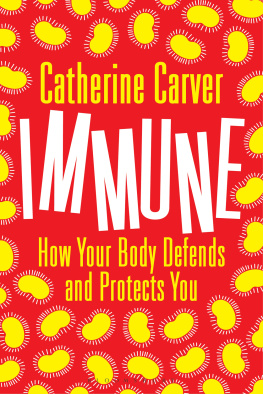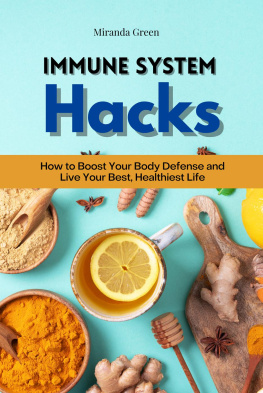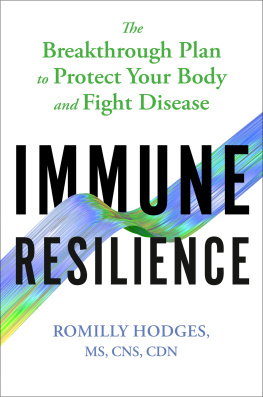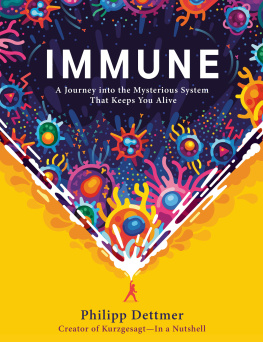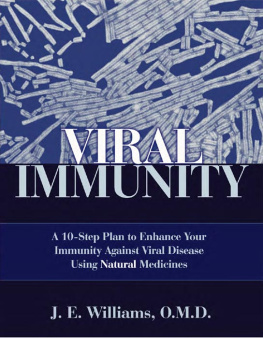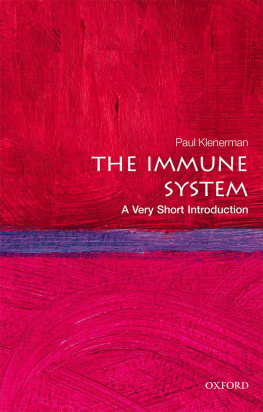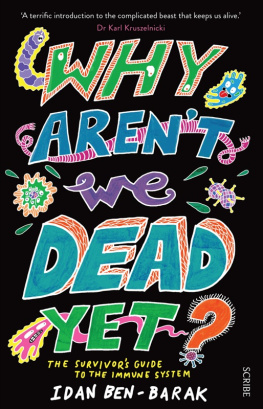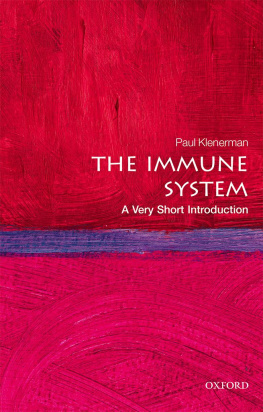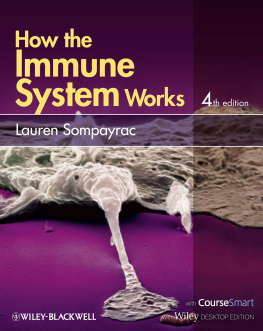
Also available in the Bloomsbury Sigma series:
Sex on Earth by Jules Howard
p53: The Gene that Cracked the Cancer Code by Sue Armstrong
Atoms Under the Floorboards by Chris Woodford
Spirals in Time by Helen Scales
Chilled by Tom Jackson
A is for Arsenic by Kathryn Harkup
Breaking the Chains of Gravity by Amy Shira Teitel
Suspicious Minds by Rob Brotherton
Herding Hemingways Cats by Kat Arney
Electronic Dreams by Tom Lean
Sorting the Beef from the Bull by Richard Evershed and
Nicola Temple
Death on Earth by Jules Howard
The Tyrannosaur Chronicles by David Hone
Soccermatics by David Sumpter
Big Data by Timandra Harkness
Goldilocks and the Water Bears by Louisa Preston
Science and the City by Laurie Winkless
Bring Back the King by Helen Pilcher
Furry Logic by Matin Durrani and Liz Kalaugher
Built on Bones by Brenna Hassett
My European Family by Karin Bojs
4th Rock from the Sun by Nicky Jenner
Patient H69 by Vanessa Potter
Catching Breath by Kathryn Lougheed
PIG/PORK by Pa Spry-Marqus
The Planet Factory by Elizabeth Tasker

Contents
Thanks are owed to every family member or friend who gave encouragement, sent me a bizarre immunology story, read a draft or patiently understood why I wasnt coming out to play for two years.
Special thanks are due to Jim at Bloomsbury Sigma for asking me whether Id ever thought about writing a book I hadnt, and I would never have started this incredible journey without him. My appreciation is also extended to every talented professional who had a hand in making my random thoughts a tangible reality, from my lovely editor and my gifted illustrators, to the beautiful bookshops that stock the book.
The biggest debt of gratitude is owed to my husband Tom, for his unending love, patience, positivity and willingness to listen to stories about everything from plague to plastic vaginas. For better, for worse, eh?
Finally thank you for picking this up and having a read I am indebted to your curiosity and hope Ive repaid it with a treasure trove of facts and stories.
Every epic tale needs a hero. Ours is 12 microns tall and lives for a matter of hours; its called a neutrophil and your life depends on it. Dont be deceived by its tiny stature and minuscule lifespan; this cell can capture bubonic plague in a web of its own DNA, spew out enzymes to digest anthrax and die in a kamikaze blaze of microbe-massacring glory. The neutrophil is a key soldier in an eternal war between our bodies and the legions of bacteria, viruses, fungi and parasites that surround us. From having sex to cleaning the kitchen sink, everything we do exposes us to millions of potential invaders. Yet we are safe. Most of the time these invaders attempts are thwarted. This is because the human body is like an exceedingly well-fortified castle, defended by billions of soldiers. Some live for less than a day, others remember battles for years, but all are essential in protecting us. This is the hidden army that we all have inside of us, and Id like to reveal its myriad of miracles and secrets to you.
Our adventure tour will begin with a jaunt through our key defences, which include tears, snot, stomach acid and a cast of killer cells. Drawing on everything from the history of medicine to cutting-edge science, well explore the incredible arsenal that lives within us and how it kills off a plethora of diseases, from the common cold to the plague.
Next well rattle through the past, present and future of organ transplants from the first heart transplant to lab-grown vaginas and the vital role the immune system plays in their success or failure. While organ transplants are needed by very few of us, the truth is every single one of us is dependent on foreign cells to thrive. This will be our focus in Outnumbered (Chapter 5) as well unveil the emerging evidence on the immune systems relationship with the bodys billions of resident bacteria.
Well follow this dirty revelation with some sexy science looking at the role of the immune system in our brief encounters, and maybe even love, as we dance the Immunological Tango (Chapter 6). The chapter that follows, appropriately, will cover pregnancy. Having grown my own cutie of a parasite while writing this book, this chapter is particularly close to my heart as it tells the tale of how the immune system allows, and actually encourages, a baby to thrive, despite being a foreign invader.
Of course not all parasites are cute or precious, and in A Palace for Parasites (Chapter 8) well meet the creepy critters that like to call us home and the ways our immune system tries to show them the door. This includes worms that can live in your brain and how one parasite might make you want to skydive. Having come across such unpleasantries it will be a relief to read about our adaptive assassins, our T and B cells, and how we can make as many different antibodies as there are stars in the galaxy. Well follow this by looking at how we can train these cells to do our bidding as we look at vaccines, a triumph of mankinds manipulation of the immune system that has enabled us to prevent and treat a legion of serious diseases.
However, our story wont all be rainbows and unicorns, as we will also uncover the itchy truth behind allergies and see what happens when the body overreacts to harmless things like strawberries, latex and even exercise. Continuing to cast the immune system as the villain of the piece, we will then investigate its dark side, and see what happens when it turns on the very body it exists to protect. Before we get too down on our defences, we will move to Defenceless (Chapter 13) and dedicate ourselves to understanding the terrible consequences of a weakened immune system and how it makes a normal life near impossible.
From there we will springboard to some of the immune systems most aggressive adversaries. First up is cancer, an opponent worthy of its own chapter as well review why the immune system finds it such a difficult challenge and how modern medicine is trying to change that. Then in Killer Bugs (Chapter 15) we will examine Ebola and anthrax two of the most accomplished killers of the human race and see why we should be afraid, very afraid.
Yet despite all there is to fear, there is also much to be hopeful about. In Clever Drugs (Chapter 16) we will end the book with a future-gazing look at a new dawn of drugs that will harness the power of the immune system and save us from the nightmare of the antibiotic apocalypse.

Full Frontal Immunity:
The First Line of Defence
Staring at a measuring cylinder full of my own pee, I couldnt help but feel the reality of being a Cambridge student wasnt quite how Id pictured it. Id definitely imagined less urine and more ancient spires, swarms of bikes and formal dining with Nobel laureates. That class experiment was one of many that showed me the brilliance of our insides (and the desperate lengths a nerd is willing to go to learn). In an era when we spend billions learning about stars trillions of miles away, its incredible just how little we know about what goes on inside each and every one of us, each and every day. Happily for you, this book offers a collection of curious tales from the immune system without any obligation to harvest your own bodily fluids.

